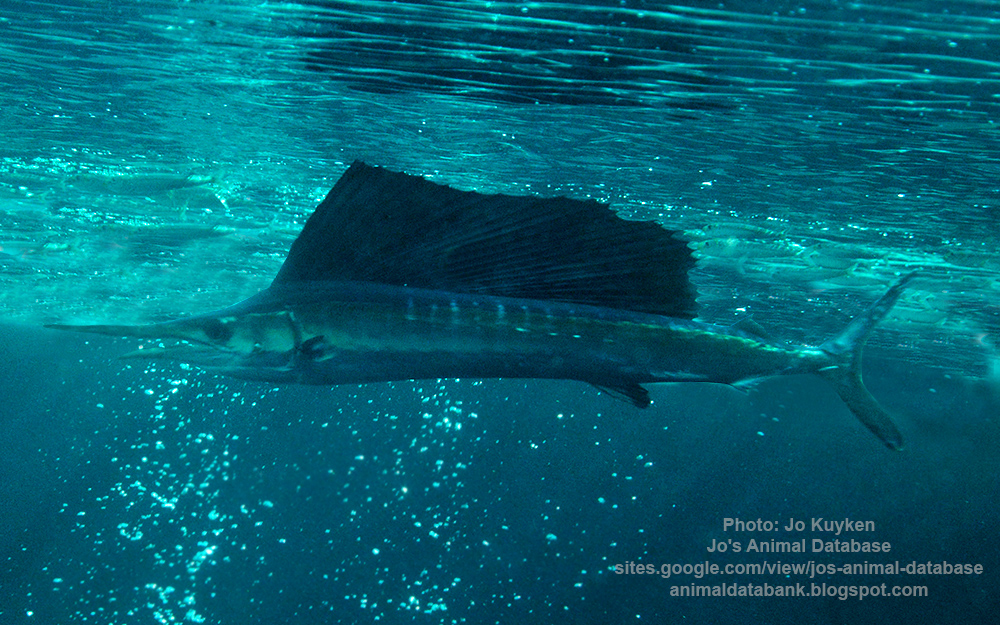Indo-Pacific sailfish
(Istiophorus platypterus)

Classification
General data
The Indo-Pacific sailfish (Istiophorus platypterus) is a sailfish native to the Indian and Pacific Oceans and is naturalized in the Atlantic where it has entered the Mediterranean Sea via the Suez Canal as a Lessepsian migrant.
It is dark blue on top, brown-blue laterally, silvery-white underbelly; upper jaw elongated in the form of a spear; first dorsal fin greatly enlarged in the form of a sail, with many black cones, its front squared off, highest at its midpoint; pelvic fins very narrow, reaching almost to the anus; body covered with embedded scales, blunt at the end; lateral line curved above the pectoral fin, then straight to base of the tail. They have a large and sharp bill, which they use for hunting. They feed on tuna and mackerel, some of the fastest fish in the Ocean.
It is theorized by marine biologists that the big dorsal fin may serve the purpose of a cooling and heating system for this fish; this is due to a network of a large number of blood vessels found in the sail and because of sail-raising behaviour exhibited by the sailfish at or near the surface waters after or before high-speed bursts.











